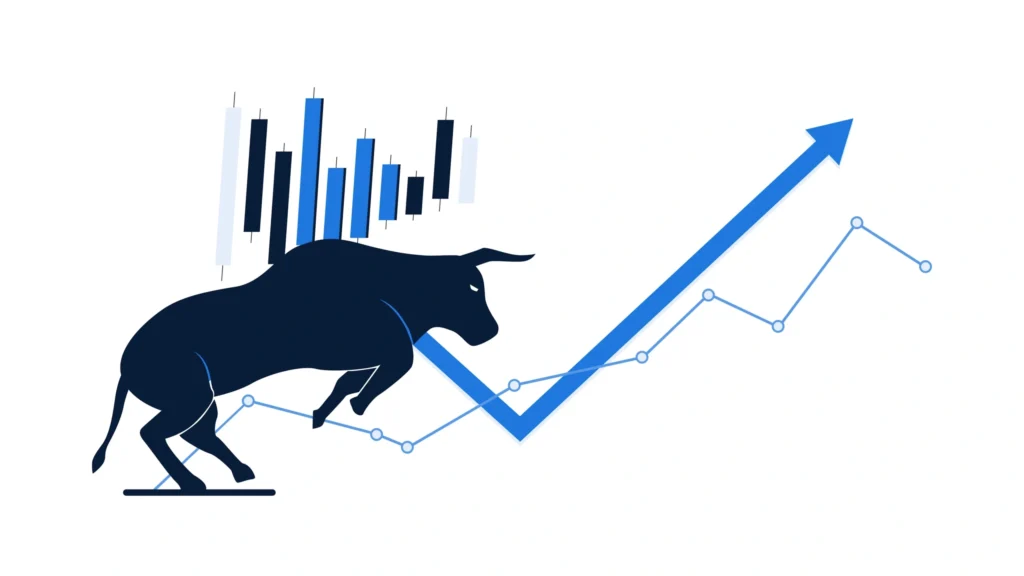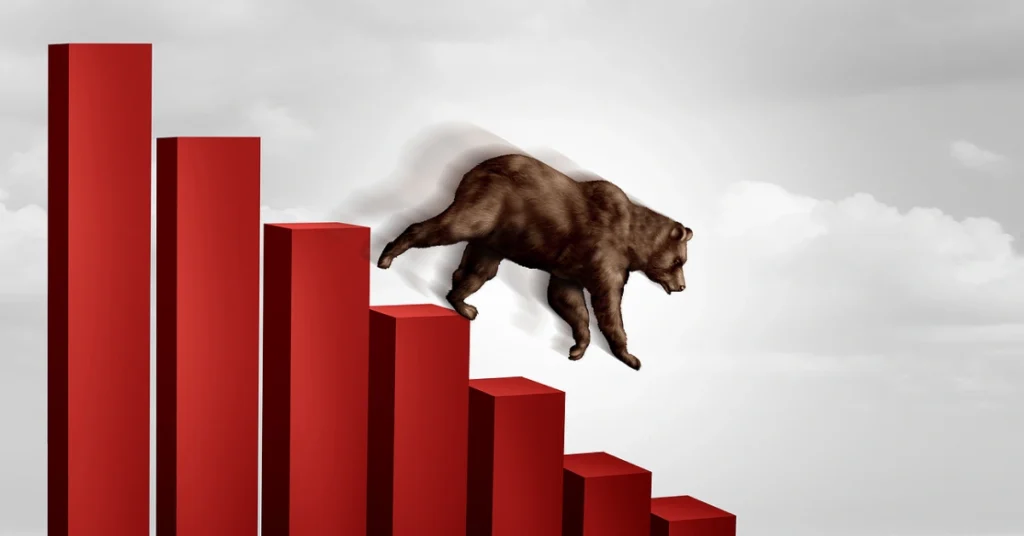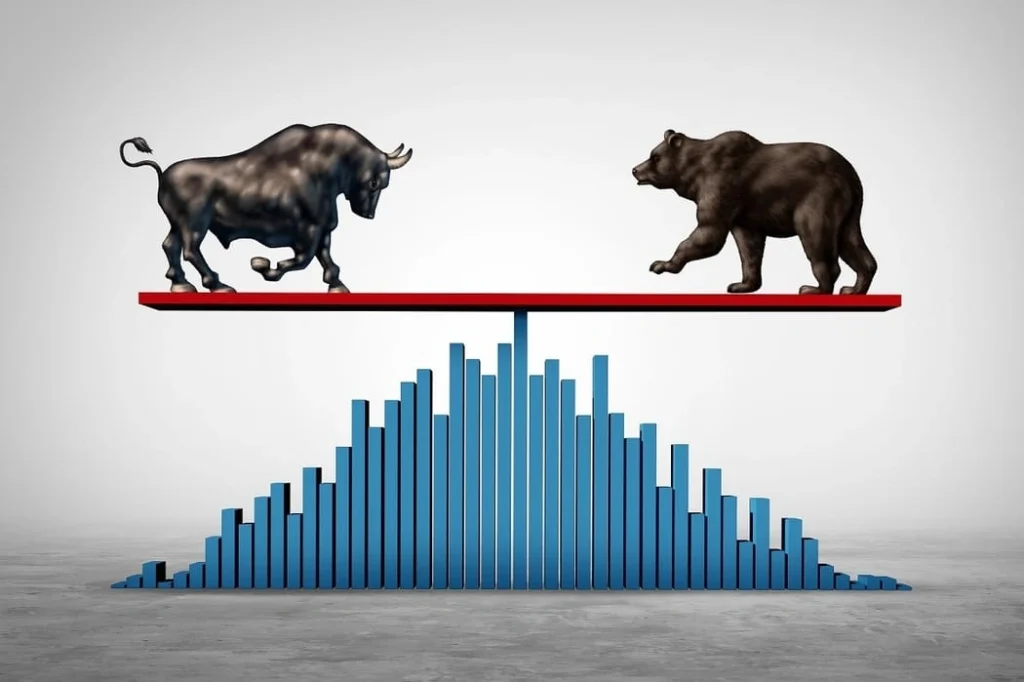Bull vs Bear Markets Myths Busted: What You’ve Been Told Isn’t Always True
August 9, 2025

Clearing Up the Confusion Before You Panic (or Celebrate)
Bull vs bear markets: If you’ve been around any financial conversation for more than five minutes, you’ve heard the terms “bull” and “bear” markets thrown around like confetti. They pop up in headlines, get echoed in your group chats, and usually come with a heavy dose of panic or hype.
But here’s the problem: a lot of what people think they know about bull vs bear markets is either outdated, oversimplified, or flat-out wrong. So let’s bust some myths—and give you a clear, no-nonsense look at what these market cycles actually mean for you.
Myth #1: A Bull Market Means Everything’s Fine

One of the most persistent myths is that a bull market = smooth sailing. Not so fast.
A bull market just means stock prices are rising—typically 20% or more from a recent low. But that doesn’t automatically mean the economy is strong, inflation is under control, or all investments are safe. Sometimes bull markets happen despite shaky fundamentals, driven more by investor optimism or even speculation than by real-world data.
Truth Check:
- A bull market doesn’t guarantee long-term gains
- Market bubbles often form during bullish trends
- It’s easy to get caught up in hype and make impulsive moves
Myth #2: Bear Markets Always Lead to Recessions

This one’s scary—and not entirely true. A bear market happens when prices fall 20% or more from a peak. Yes, it can signal an economic downturn… but it doesn’t always.
Some bear markets are short-lived corrections. Others are driven by specific sectors or panic-driven sell-offs that don’t reflect broader economic reality. Just because the market is down doesn’t mean everything is falling apart.
Quick Signs You’re in a Bear Market:
- Stock indices slide across the board
- Fear dominates investor sentiment
- Headlines talk about layoffs or shrinking profits
- Analysts debate whether a “recession is coming”
Bull vs Bear Markets: Two Opposing Forces, Same Game

Here’s the deal—bull vs bear markets are just two sides of a market cycle. Think of them as the market inhaling and exhaling. You can’t have one without the other, and they’re both necessary for long-term balance.
| Misconception | Reality Check |
|---|---|
| Bull markets are always rational | Often driven by emotion or herd mentality |
| Bear markets signal disaster | Many are routine, and some are quite brief |
| You should invest only in bulls | Smart money often buys during bear markets |
| Timing the switch is easy | Even pros rarely call the top or bottom |
What Really Drives Bull vs Bear Markets? It’s Not Just Numbers

Here’s another myth: markets move based on logic. Nope—emotion plays a massive role.
Sure, technical indicators matter: interest rates, GDP, earnings, etc. But bull vs bear markets are heavily swayed by sentiment. A rumor, a war, or a political tweet can shake markets faster than a Federal Reserve press release.
Sometimes, markets react to expectations more than actual events. That’s why staying grounded is more important than following the crowd.
Myth #3: You Should Avoid Investing During Bear Markets

Honestly? Some of the best investing opportunities show up during bear markets—if you’re willing to be patient and strategic.
Prices are down, which means solid companies often go on sale. The trick isn’t avoiding bear markets; it’s avoiding emotional decisions during them.
If You’re in a Bear Market:
- Focus on value—not hype
- Use dollar-cost averaging to manage risk
- Avoid panic-selling on bad days
And in a Bull Market:
- Take profits gradually
- Don’t chase parabolic growth stories
- Stay diversified to avoid overexposure
Why Bull vs Bear Markets Matter (Even If You’re Not Trading)

Still think this doesn’t apply to you? Think again.
Your job stability, the strength of your 401(k), and even the price of everyday goods can all shift depending on where we are in the market cycle. Understanding bull vs bear markets helps you make better financial decisions—whether you’re investing, saving, or just trying to plan ahead.
Final Myth: The Market Will Never Recover (or Never Drop Again)

Extreme thinking leads to extreme mistakes. During bull runs, people think the good times will never end. During bear phases, it feels like we’ll never see green again.
But the market always cycles. It’s done so for over a century. The trick isn’t timing it perfectly—it’s riding it out smartly.
Knowing the truth behind bull vs bear markets isn’t just about sounding informed—it’s about building resilience in how you think about money. And that might be the most powerful thing you can do.
Relevent news: Here

